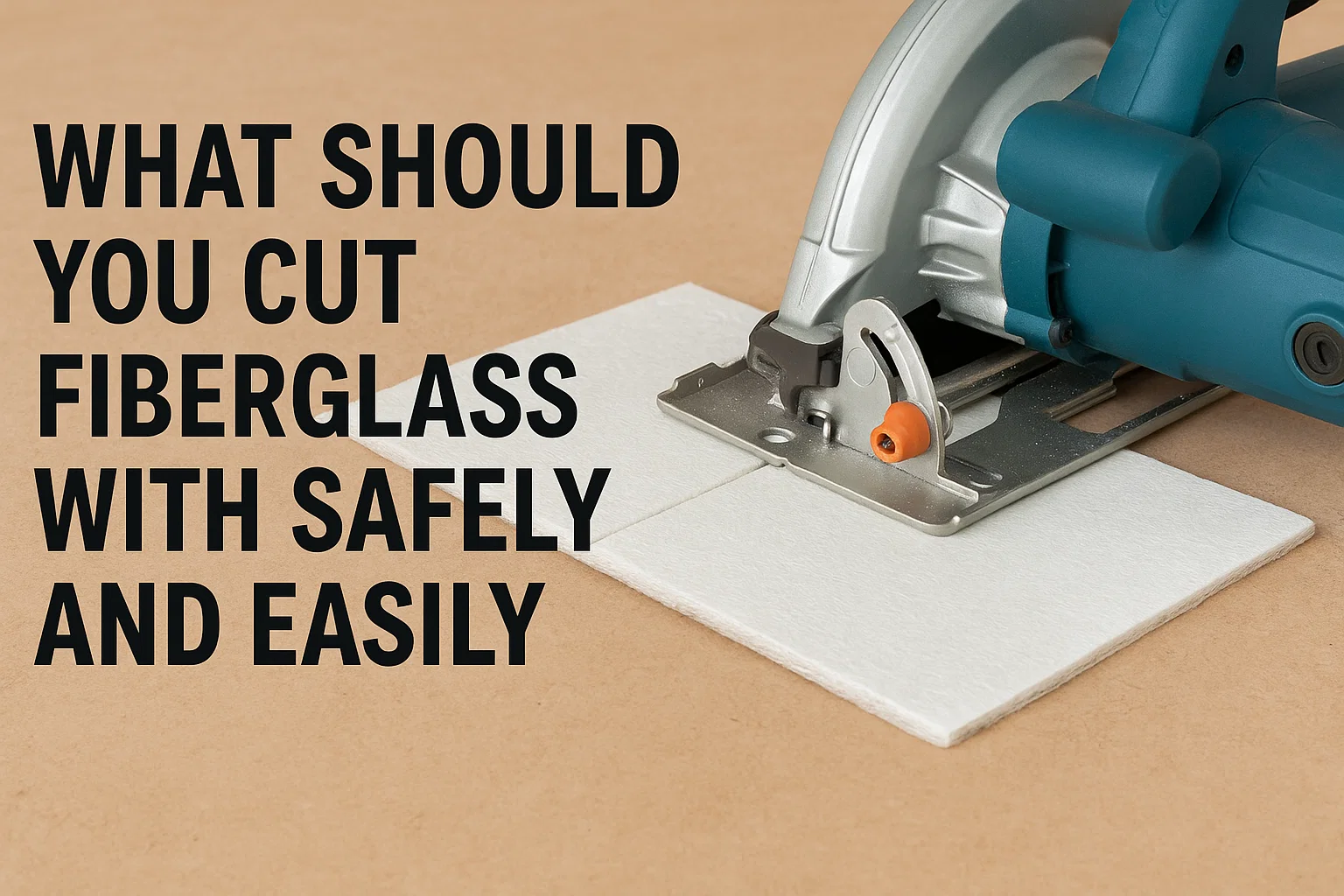Introduction
Cutting fiberglass isn’t just about grabbing the nearest saw and going at it. Whether you’re working on structural profiles, FRP panels, or reinforced rods, using the wrong tool can lead to jagged edges, hazardous splinters, and compromised structural integrity. That’s why understanding what you should cut fiberglass with is key to both safety and precision.
Fiberglass is widely used across industries—from power utilities and marine construction to agriculture and OEM manufacturing—thanks to its strength, corrosion resistance, and long lifespan. For companies dealing with large volumes or tight tolerances, like those served by Unicomposite—a leading pultruded fiberglass manufacturer in China—the method of cutting directly affects the quality and utility of the end product.
In this article, we break down the best tools for cutting fiberglass, safe handling practices, and when it’s worth outsourcing to professionals for precision fabrication.

What should you cut fiberglass with?
What Should You Cut Fiberglass With? Understanding the Options
Why the Right Tool Matters
Fiberglass is a composite of glass fibers and resin, meaning it’s tough but brittle. Using the wrong tool can cause:
Delamination, where the material layers separate.
Ragged or frayed edges that require additional finishing.
Health hazards, due to fine airborne particles released during cutting.
For manufacturers and contractors using fiberglass in critical applications—like electrical insulation or structural reinforcement—maintaining cut precision ensures both performance and safety.
Tool Comparison: Pros and Cons
Here’s a breakdown of common fiberglass cutting tools:
Rotary Tools (e.g., Dremel)
✅ Great for small, intricate cuts
❌ Slower and not ideal for thick material
Angle Grinders (with diamond or abrasive blade)
✅ Fast and effective for straight cuts
❌ Generates lots of dust; requires PPE and ventilation
Jigsaws / Reciprocating Saws (with fine-tooth blades)
✅ Versatile for cutting panels or shapes
❌ Can vibrate, leading to splintering if not clamped properly
Circular Saws (with carbide or diamond blades)
✅ Best for long, straight cuts in flat panels
❌ Loud and dusty; needs proper setup
Scoring Tools (for thin sheets)
✅ Low dust and simple setup
❌ Only effective on thin, flat fiberglass
Each tool serves a different use case, so the best option depends on material thickness, cut complexity, and volume.
Best Practices for Safe and Clean Fiberglass Cutting
Pre-Cutting Preparation
Before making the first cut:
Measure and mark precisely using a straight edge and marker.
Support the fiberglass fully to prevent vibration or chipping.
Use PPE—respirator (N95 or better), safety goggles, long sleeves, and gloves—to protect from glass dust and sharp fragments.
Cutting indoors? Use a HEPA-filtered vacuum or ventilation system to capture airborne particles.
Cutting Techniques from the Field
Professionals often tape the cutting line with masking tape to reduce surface splintering. Here’s a common workflow:
Score or mark your line clearly.
Apply masking tape over the area.
Cut slowly with minimal pressure to avoid heat buildup.
Use a fine file or sandpaper to smooth the edge after cutting.
A contractor in electrical utility installation reported using a carbide-tipped blade for trimming pultruded angles supplied by Unicomposite. “It gave us clean edges with minimal finishing, even across dozens of cuts,” they noted.
When to Consider Professional Fiberglass Fabrication
Signs It’s Time to Outsource
While DIY cutting works for many jobs, there are situations where professional services are worth the investment:
You need precision cuts with tight tolerances (e.g., +/- 0.5 mm).
Your application is aesthetic or performance-critical (like marine or cooling tower systems).
You’re cutting large volumes, and manual labor isn’t cost-effective.
Edge quality or coating integrity matters.
How Unicomposite Supports Custom Fiberglass Solutions
Unicomposite offers complete fiberglass processing capabilities, including:
Pultrusion, for creating standard and custom profiles.
CNC cutting, ensuring high-precision results.
Hand-layup and molding, for complex shapes and reinforcements.
They’ve supported clients in aquaculture, wastewater treatment, and landscaping infrastructure by delivering components that are cut, finished, and ready for installation—saving time and improving durability.
Conclusion
Knowing what you should cut fiberglass with helps ensure smooth results, protect your health, and maximize the material’s potential. From rotary tools for detailed work to industrial saws for structural panels, matching the tool to your use case is key.
For bulk orders, tight specs, or custom fabrication, it pays to work with a manufacturer like Unicomposite, whose extensive experience across industries ensures that you receive durable, precision-cut fiberglass components tailored to your project.
Looking for engineered fiberglass solutions or custom fabrication? Request a quote today from Unicomposite and partner with a team that knows your industry and material inside out.
Frequently Asked Questions
What’s the safest way to cut fiberglass panels without creating too much dust?
Using a scoring knife on thin sheets or a circular saw with a vacuum attachment minimizes dust. Always wear a respirator and use a well-ventilated space.
Can I use regular saw blades to cut fiberglass?
You can, but it’s not recommended. Regular blades dull quickly and can damage the fiberglass. Instead, use carbide or diamond-tipped blades designed for composites.
How do I avoid frayed edges when cutting fiberglass?
Cut slowly, use tape along the cut line, and ensure the material is clamped or supported well. Sand the edge afterward for a clean finish.
When should I outsource fiberglass cutting?
Outsource when you need high precision, have complex shapes, or large batch volumes. Professional services also reduce health and safety risks.
Does Unicomposite offer custom-shaped fiberglass parts?
Yes, Unicomposite provides custom pultrusion and fabrication for unique designs across various industries, including marine, electrical, and industrial construction.
 info@unicomposite.com
info@unicomposite.com


























